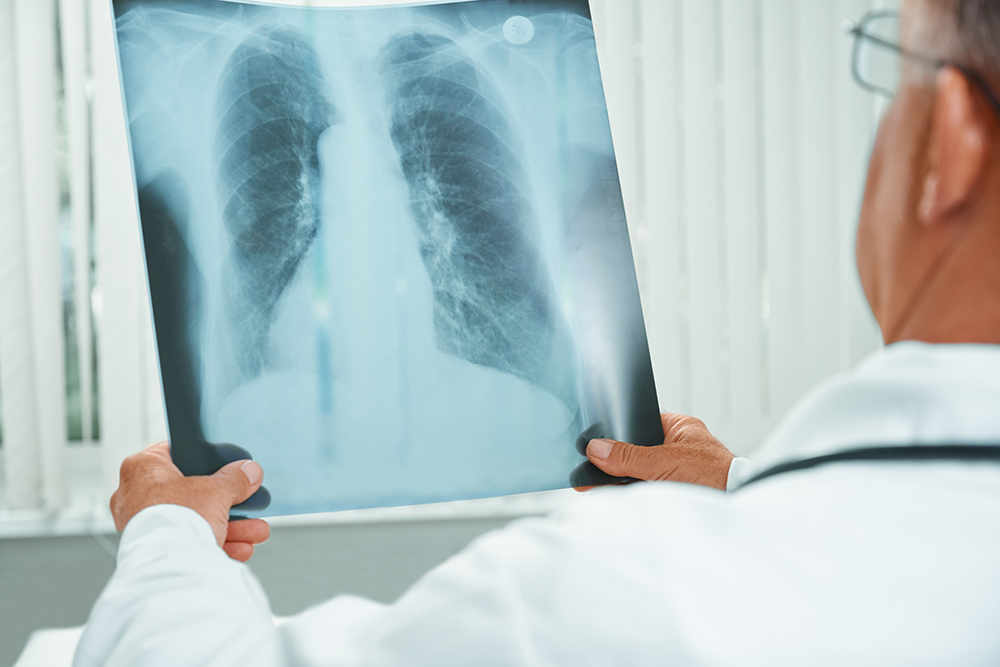Saving people with COVID-19 by suppressing the immune system
The immune system protects us from attacks from external enemies such as bacteria and viruses, but sometimes the body fights so fiercely against external threats that people die. In COVID-19, the immune system slows the spread of viruses. New research shows that this means that damaged tissue is not repaired in the lungs, which is why many people succumb to COVID-19. One way to rescue people with serious cases of COVID-19 is therefore to suppress the immune system’s chemical warfare.

People who have become seriously ill from the new coronavirus have experienced how their lungs struggle for survival. The severity of infection with SARS-CoV-2, influenza and many other respiratory viruses is linked to the destruction of the surface of the lungs – by the virus attack itself but also because of how the immune system responds to viruses. Cytokines are small proteins the immune system uses to communicate.When excessive quantities are produced, this starts processes that draw large quantities of fluid into the lung tissue, which causes problems with breathing and makes the lung tissue more difficult to protect against bacteria.
“The immune system’s cytokines comprise a double-edged sword in these types of infections. The cells infected by the virus are prevented from growing and dividing, but unfortunately these cytokines have the same effect on the cells that do not contain viruses, such as those in the damaged lung tissue. Our new results show that the damaged lung cells are therefore not repaired. The ideal treatment for people who are seriously ill with respiratory viruses is therefore initially to stimulate cytokines early during infection and then downregulate them later to avoid killing the patient,” explains Rune Hartmann, Professor, Department of Molecular Biology and Genetics, Aarhus University.
Affects both the virus and people
The new research is part of many years of work with cytokines – tiny proteins that are very important for communication in the body. Especially in the immune system, cytokines play an essential role, and interferons are a type of cytokines that defend against viruses. When the body detects that it is infected with a virus, interferons are secreted and then do everything possible to fight the virus.
“Both type I and type III interferons are absolutely essential to the body’s response to virus attacks. Type I interferons are produced in large quantities and regulate and activate the immune response to viral attacks, but in recent years type III interferons have been found to play an equally important but not very well-described role. This is what we are working towards,” says Rune Hartmann.
The reason why type III interferons were discovered much later is not only because they are expressed in smaller amounts. They can also only send their signals through signalling pathways on the body’s internal surfaces – the epithelial tissue – for example, on the surface of the lungs. Here, the interferons attack the cells that viruses have invaded to ensure that the viruses do not spread. Unfortunately, all cells are affected and not just the cells that are infected with the virus.
“Our new experiments showed that the type III interferons, while combatting the virus by preventing the growth of the infected cells, also interfere with the other cells in the lung epithelium, and since many cells are damaged and die during a virus attack, repair and renewal are needed, and the big problem is that the body’s normal repair of lung tissue simply stalls. Prolonged interferon production therefore prevents the ability of the lungs to recover, and the experiments showed that it makes the lung tissue very susceptible to bacterial attack,” explains Rune Hartmann.
Short-circuiting the release of interferons
The new research provides important new knowledge related to the ongoing COVID-19 pandemic. Critically ill people typically experience cytokine storms, in which the efforts of the interferons to fight the virus instead weaken people’s lungs so much that many die. Although the new experiments were performed with influenza viruses and with mice as a model organism, the researchers are certain that what they observed in mice also occurs in humans.
“The type I interferons are very effective in combatting viruses, but they create severe inflammation of the lung tissue, so that the patient almost drowns. The type III interferons fight viruses effectively in the lungs and are more gentle than type I interferons. But they still inhibit the repair of lung tissue. This places the maximum pressure on the lungs, and many people succumb,” says Rune Hartmann.
The interferon response in COVID-19 is a major additional challenge. The research so far suggests that the new coronavirus is initially able to short-circuit the release of the interferons, which means that the virus is able to copy itself for a long time, and when the immune system finally acts, it partly makes things worse. Therefore, clinical trials with both type I and III interferons are currently underway to determine whether treatment with these can help COVID-19 patients.
“It is important that to stop interferon treatment in time so that it does not inhibit the repair of the lungs. We now know that helping patients optimally requires strongly stimulating interferon early during infection when the body secretes too little, followed by timely downregulation of interferon responses in the late phase, enabling efficient repair of the lung epithelium,” concludes Rune Hartmann.
“Type I and III interferons disrupt lung epithelial repair during recovery from viral infection” has been published in Science. In 2019, the Novo Nordisk Foundation awarded a grant to Rune Hartmann for the project How Local System Interferon Responses are Balanced: Molecular Mechanism and Options for Intervention.
The article is written by Morten Busch from ScienceNews (the Novo Nordisk Foundation).
For further information, please contact
Professor Rune Hartmann
Department of Molecular Biology and Genetics
Aarhus University, Denmark
+45 28992578 - rh@mbg.au.dk
